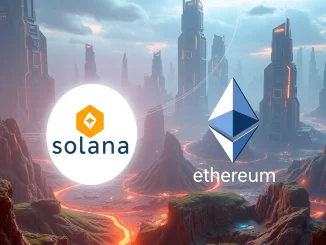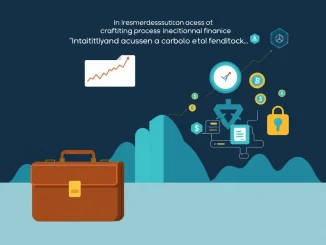
Buckle up, crypto enthusiasts! The Bitcoin mining landscape has just experienced a significant shift. The network’s mining difficulty, a crucial metric that dictates the complexity of mining new blocks, has taken a notable dip. This isn’t just a minor fluctuation; we’re talking about a substantial 3.15% fall, bringing the difficulty down to 110.57 trillion (T). What does this mean for you, whether you’re a seasoned miner, a curious investor, or just someone trying to understand the intricate world of cryptocurrency? Let’s dive deep and unpack this fascinating development.
Understanding Bitcoin Mining Difficulty and Its Importance
First things first, let’s demystify Bitcoin mining difficulty. Imagine Bitcoin’s blockchain as a complex puzzle. Miners, equipped with powerful computers, race to solve this puzzle to validate transactions and add new blocks to the chain. The difficulty level is essentially how hard this puzzle is to solve. It’s adjusted roughly every two weeks (or every 2,016 blocks) to maintain a consistent block generation time of approximately 10 minutes.
Why is this difficulty adjustment so critical? It’s all about maintaining stability and security within the Bitcoin network. Here’s why it matters:
- Maintaining Block Time: The difficulty adjustment mechanism ensures that regardless of how much computing power (hashrate) is dedicated to the network, blocks are consistently mined around every 10 minutes. This predictability is vital for the smooth operation of the Bitcoin ecosystem.
- Network Security: Difficulty adjustments make it economically unfeasible for malicious actors to manipulate the blockchain. A higher difficulty means more computational power is required to attack the network, making it incredibly expensive and practically impossible to execute a 51% attack.
- Miner Profitability: Difficulty directly impacts miner profitability. When difficulty increases, it becomes harder to mine Bitcoin, potentially reducing profits if electricity costs and Bitcoin prices remain constant. Conversely, a decrease in difficulty can make mining more profitable.
Decoding the Latest Difficulty Adjustment: A 3.15% Drop
The latest difficulty adjustment occurred at block height 885,024, recorded at 20:29 UTC on February 23rd, according to data from CloverPool. This adjustment saw a 3.15% decrease, bringing the difficulty down to 110.57 T. This is a noteworthy drop, especially considering the generally upward trend of difficulty over Bitcoin’s history.
But what triggered this downward adjustment? Difficulty adjustments are reactive, not proactive. They respond to changes in the network’s total mining hashrate – the total computational power being used to mine Bitcoin. A decrease in hashrate generally leads to longer block times than the desired 10 minutes, prompting the network to reduce difficulty to bring block times back to target.
Think of it like this: if fewer miners are participating or some miners reduce their operations, the overall computational power decreases. To compensate and keep block generation consistent, the puzzle gets a bit easier to solve.
The Significance of Block Height 885,024
Every block height marks a significant milestone in the Bitcoin blockchain’s journey. Block height 885,024 is no different. It’s the point at which the network recalibrated its mining difficulty, reflecting the prevailing network conditions over the preceding blocks. This specific block height serves as a historical marker, allowing us to track the ebb and flow of Bitcoin’s mining landscape over time.
Understanding block heights is crucial for:
- Tracking Network Evolution: Following block heights allows us to observe how key metrics like difficulty and hashrate evolve as the Bitcoin network matures.
- Verifying Transactions: Block heights are fundamental to transaction confirmation. The deeper a transaction is buried within subsequent blocks (higher block height), the more secure and irreversible it becomes.
- Analyzing Difficulty Adjustments: By noting the block heights at which difficulty adjustments occur, we can analyze the frequency and magnitude of these changes and gain insights into network dynamics.
Impact on Cryptocurrency Mining and Miners
A decrease in mining difficulty is generally welcomed by cryptocurrency mining participants, particularly Bitcoin miners. Here’s why:
- Increased Profitability: With lower difficulty, miners have a higher chance of successfully mining a block with the same amount of computational power. This can lead to increased Bitcoin rewards for their efforts, boosting profitability, especially for those with efficient mining setups.
- Reduced Competition: A difficulty drop can sometimes be a sign of reduced competition in the mining space, potentially due to miners going offline or reducing their operations. This can further enhance the profitability for remaining miners.
- Potential for Hashrate Increase: Increased profitability can incentivize miners to deploy more hardware or reactivate previously offline machines, potentially leading to a subsequent increase in hashrate and eventually a difficulty increase in future adjustments.
However, it’s important to remember that mining profitability is also heavily influenced by the price of Bitcoin and electricity costs. A difficulty decrease alone doesn’t guarantee profits if Bitcoin prices fall or energy expenses rise.
Mining Hashrate and Difficulty: An Interconnected Dance
Mining hashrate and difficulty are intrinsically linked. They operate in a dynamic feedback loop. Changes in hashrate are the primary driver of difficulty adjustments. Let’s illustrate this relationship:
| Scenario | Hashrate Change | Block Time | Difficulty Adjustment |
|---|---|---|---|
| Hashrate Increases | Increases | Block time becomes shorter than 10 minutes | Difficulty increases to slow down block production |
| Hashrate Decreases | Decreases | Block time becomes longer than 10 minutes | Difficulty decreases to speed up block production |
This constant adjustment ensures the Bitcoin network’s self-regulating nature and maintains its targeted block time, regardless of fluctuations in miner participation.
Looking Ahead: Further Difficulty Reduction Expected?
The CloverPool data suggests that the next difficulty adjustment, anticipated in approximately 14 days, is projected to lower the difficulty further to 109.38 T. This would represent an additional decline of 1.07%. If this projection holds true, it would mark a continued easing of mining difficulty, potentially offering further relief to miners.
However, these are just projections. Actual difficulty adjustments are based on the average block time over the preceding 2,016 blocks. Significant shifts in hashrate in the coming days could alter the final adjustment figure. Keep an eye on network hashrate trends to get a clearer picture of the likely direction of the next difficulty adjustment.
Conclusion: Navigating the Fluctuating Tides of Bitcoin Mining
The 3.15% decrease in Bitcoin mining difficulty is a significant event that underscores the dynamic nature of the Bitcoin network. It presents a potential opportunity for miners to enhance their profitability in the short term. For the broader crypto ecosystem, it highlights the self-regulating mechanisms that ensure Bitcoin’s stability and security.
As we move forward, monitoring difficulty adjustments and hashrate trends remains crucial for understanding the health and evolution of the Bitcoin network. Whether you’re a miner, investor, or simply a curious observer, staying informed about these fundamental metrics will provide valuable insights into the ever-evolving world of cryptocurrency.



